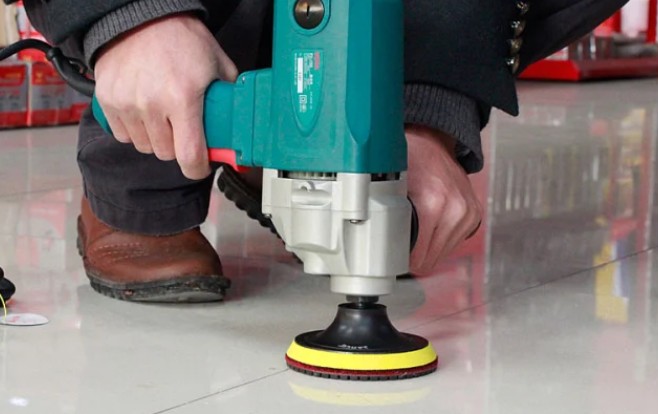What are the factors affecting the selection of diamond grinding discs?
The selection and use of diamond grinding discs are regular: diamond grinding discs or concrete thick grinding discs are used for ground leveling and rough grinding; fine grinding discs can be used to handle well without coarse grinding discs; increase the weight of the grinder or Increasing the speed can improve the efficiency; try not to skip numbers and use grinding discs; dry grinding saves more consumables than water grinding, but water grinding will make the ground more uniform and fine; clean the ground and dry it with high-speed dry polishing with thin grinding discs to polish the fruit more Good; using a sponge polish improves the shine of the floor.
Today, Z-LION will briefly organize and share with you the issue of the factors that affect the selection of grinding discs.

1. The flatness of the ground
In order to achieve an even floor, it is important to address any unevenness or damage to the existing floor. This can be done by hand leveling or using a high-powered grinder to cut away loose or damaged surface layers. When choosing a grinding machine, it is very important to choose a grinding machine with a strong grinding force, such as a concrete diamond grinding disc. Specially designed for leveling purposes, these discs can provide effective results. For better flatness, it is recommended to use a self-leveling cement floor or mechanically level the floor with a trowel. These methods help ensure a more even, smoother surface. For a polished finish, a diamond resin disc is required. These discs are specially designed to create a beautiful shiny look on the ground. Additionally, they tend to be relatively economical, making them a practical choice for achieving a polished surface. Overall, a flat and visually appealing floor can be achieved by using the proper grinding equipment and technique.
2. The hardness of the ground
The relationship between concrete grade and ground hardness: It is generally accepted that the grade of concrete correlates with the hardness of the ground, with higher labels indicating greater strength and hardness. However, due to differences in factors such as raw material quality, construction techniques, and curing conditions, the hardness achieved may not always correspond to the expected correlation.
Concrete floor hardness is expressed using the Mohs scale: The ground hardness of concrete floors is usually expressed in Mohs hardness. This scale provides a measure of mineral hardness on a scale of 1 to 10. Concrete floors typically have a hardness range of 3-5 on the Mohs scale, representing a medium hardness suitable for most applications.
Alternative methods for assessing ground hardness: In the absence of a Mohs hardness tester, alternatives can be used to assess the hardness of the ground on construction sites. One method involves assessing the hardness of the concave area and checking for scratches from nails or keys. If you find these sunken areas or scratches with a hardness lower than 5 on the Mohs scale, it indicates that the ground is less hard. Conversely, if the hardness is greater than 5, it indicates that the ground hardness is high.
3. The type and size of grinding disc
The choice of disc type and size depends on the specific requirements of the floor preparation. PCD grinding pads are good for removing thicker coatings, while metal-based abrasives are used for floor surface preparation and rough grinding. Resin-bond grinding discs are versatile and can be used for rough grinding, finish grinding, finishing, and polishing surfaces. The particle size of the diamond particles in the grinding tool is represented by numbers. Lower numbers indicate larger particles. Metal grinding discs usually have different numbers such as 30#, 50#, 100#, 200#, etc. The choice of particle size should consider the grinding situation. For example, if the flatness of the ground is poor or the surface is loose, use a 30# metal grinding disc to remove the loose surface and level the ground. For frosted and polished surfaces, 50# or 100# metal discs are usually required. The particle size range of the resin grinding disc is from 50# to 3000#. Different particle size numbers are distinguished by different colored sticky cloths. These discs can be used for rough grinding, fine grinding, finishing, and polishing of floors. Resin discs also come in two variants: hard disk and floppy. Soft abrasive discs generally have a better polishing effect and are suitable for all types of floor grinders, especially medium and large floor grinders. When selecting the type and size of discs to achieve the desired results, it is important to consider the specific ground conditions and desired results.
-
Online service
-
Official wechat account

-
QQ:40933769
-
E-mail:sales@z-lion.com
Online Message
Please feel free to give your inquiry in the form below. We will reply you in 24 hours.

